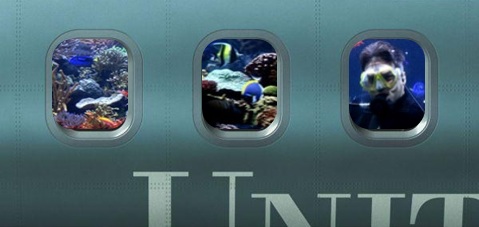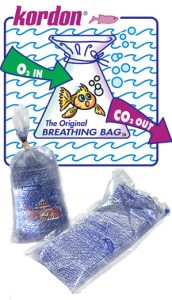 I had always considered myself to be a light packer, just the essentials. Travelling over the past few years had added some level of complication to that. Now we have two new obstacles to contend with- gear and the ever-present possibility that we will be bringing back fish from wherever we are. The gear, especially if it’s dive gear, is always going to be a hassle. There is no way around that. However, there are some mitigating steps that we have become accustomed to taking to reduce the hassle of bringing fish home as much as possible.
I had always considered myself to be a light packer, just the essentials. Travelling over the past few years had added some level of complication to that. Now we have two new obstacles to contend with- gear and the ever-present possibility that we will be bringing back fish from wherever we are. The gear, especially if it’s dive gear, is always going to be a hassle. There is no way around that. However, there are some mitigating steps that we have become accustomed to taking to reduce the hassle of bringing fish home as much as possible.
If there is ANY chance that you will be trying to bring livestock back with you in your luggage, I recommend bringing a large empty Tupperware container, or any other rigid box with a lid, to ensure that you will have room. If you are not staying in a place where basic office supplies are accessible, I would also bring several rubber bands with you. The most important tool that we have used in this transfer is Kordon breathing bags. There may be other manufacturers of a similar product, but I am not aware of any others. Somehow, people with what I’m sure are impressive degrees in some science that would have allowed them to take high paying jobs at intelligence agencies or pharmaceutical companies must have gotten duped into entering the pet trade. Lucky for us, they came up with these. You don’t pack them with any air, the air can permeate the bag, but the water cannot. Genius! Fish in bags, bags in Tupperware, Tupperware in suitcase surrounded by as much clothing cushion as you can muster and voilá!
While I won’t say that this system is totally failsafe, I have been impressed with how often, and how well, it has worked for us. When my husband and I went to Honduras a few years ago, we planned on bringing back fish for the Long Island Aquarium and Exhibition Center (then called Atlantis Marine World) in Riverhead, NY. Armed with our fish and wildlife paperwork and our brilliant packing technique we managed to find couple of gems destined for display tanks. Our flight landed in JFK at 3 o’clock in the morning and about 30 minutes after the last bag made its journey around the luggage carousel we accepted the fact that our bags had indeed been lost. We had a heck of a time explaining to the customs agents (apparently, there aren’t any fish and wildlife people at JFK at 3am) that our bags were lost and there were live fish in them and we had the correct paperwork, but no way of getting the bags and the paperwork to fish and wildlife at the same time. After an hour or so of discussion, they sent us on our way swearing that they would make sure the paperwork found the bags. We drove the whole way home mourning the loss of our certainly doomed fish. When our bags arrived two days later we opened them with hesitation certain that the three day trip had been too much for our poor fishy friends. However, we found each and every one of them happily swimming around in their bag! Not a single death!! Since then, we have been singing the praises of this kind of travel.
Now, overall, I recommend this strategy if you are going to a conference or an area of the country with a particularly good LFS that you have been dying to check out and are planning on coming back with livestock. If that’s the case, and you don’t have breathing bags on hand, this strategy will also work just fine with a normal fish bag and oxygen. While I think the survival time may be less with this method, you have the ability to double bag the fish, which you can’t do with breathing bags, so the bag is probably less likely to rupture.
If you are planning on collecting your own fish, make sure you know the regulations of the area that you are travelling to. Outside of Florida and now parts of Hawaii, to the best of my knowledge, the collection restrictions are relatively lax, but they may still require a license of some kind, and there may be restrictions on bag limits of what you are taking. You also need to know exactly what it is you’re taking. That really cute little fish you see now may be a baby cobia (Rachycentron canadum) which is not only an important game fish with strict size restrictions, which the 3 inch guy in your net certainly won’t meet, but it will grow to a size of 6 feet, which may not work for your 72 gallon tank.
Bringing fish back from an international destination throws and even bigger monkey wrench into this plan. Most of the paperwork you need can be found through fish and wildlife; however you need an import license and a declaration form which most people don’t have. You can get the paperwork through fish and wildlife, but the license alone is $100, so it may not be worth the hassle. You also need to make sure that it is legal to take the fish out of the country you are visiting. Restrictions on corals are usually more stringent than those on fish, but overall, I do not recommend attempting to cross international borders with anything that is alive. Otherwise, pack light and enjoy!
If you don’t want to take the risk of your fish bags leaking on your cashmere sweater, I was just informed that Tal Sweet recently wrote a very interesting article on carrying fish on a plane (which I had no idea you could still do!), check it out here: http://www.reefhobbyistmagazine.com/downloads/pdf/version19.pdf










What a great article!
I have always wondered if I was allowed to buy fish/coral at a store and ship it in my luggage on a commercial plane.
Do you use heat packs? If so, where do you place them? If not, how do you combat the low temps in luggage area?
Is this allowed on all airlines? I ask b/c I have asked every person I have ever dealt with at the West Palm Beach Airport (Jet Blue)and no one ever knows the answer.
I never wanted to risk confiscation, so I have refrained from attempting this.
Thank you so very much!!
rookie07-
Sorry it took me so long to respond. I have never had to use heat packs. I have always figured that if they put dogs, cats, etc. in those luggage compartments that they must be pressurized/temperature controlled, and I have yet to be proven wrong. In the trip from Honduras described above we were flying back into NY in March, so it was chilly, but the clothes add a buffer and all was fine. If you think that there is a chance that your bag may be out on a luggage cart or something in cold temps, a heat pack might not be a bad idea though. Maybe taped to the outside of the tupperware, perhaps even throw in a paper towel buffer between the pack and the container.
According to TSA guidelines, there is nothing about checking your fish that would place them under the “prohibited items” designation. However, if you catch someone on a bad day, they may have a different interpretation. I’d keep your receipt (especially if you got the fish in an area where collecting is regulated), and fight for your fish. If someone tries to take them, ask where exactly it states that you can’t bring a bag full of water on a plane in your checked luggage. Most likely the people will continue to be unsure of the answer, so if you act confident, they’ll believe you. 🙂 Although, considering the fact that I’ve learned from my husband, who once flew from California to Montana to New York with a snake in his hoodie pocket, I may be a little more of a risk taker than some. “Presume liberty!” 🙂
Ashleigh,
Thanks for covering the international aspect of this and for mentioning my article. 🙂
Tal
Thanks Tal! When I asked Todd to look over this post before I submitted it he said, “I think Tal just wrote about this. You might want to make sure it’s not the same information.” I thought it was very funny that we both talked about this and was ready to delete my post for being redundant. I was shocked to find that you could still bring fish in your carry-on in the post 9/11 world! I found the article very informative, and was a little relieved to find that we had discussed different travel strategies. 🙂 Hope all is well!
Another option to consider in case you get a ticket agent who’s having a bad day: you can find an air cargo counter and just ship your fish to your destination. I once missed my flight while a TWA agent spent almost an hour making calls to determine whether I was allowed to check my box of fish. He never did get a definitive answer, but ended up telling me that I couldn’t. Since I had plenty of time to kill before my next flight, I walked around and eventually found a Delta air cargo desk and shipped the box of fish. It cost me $50 and the box was waiting for me at JFK when I arrived.